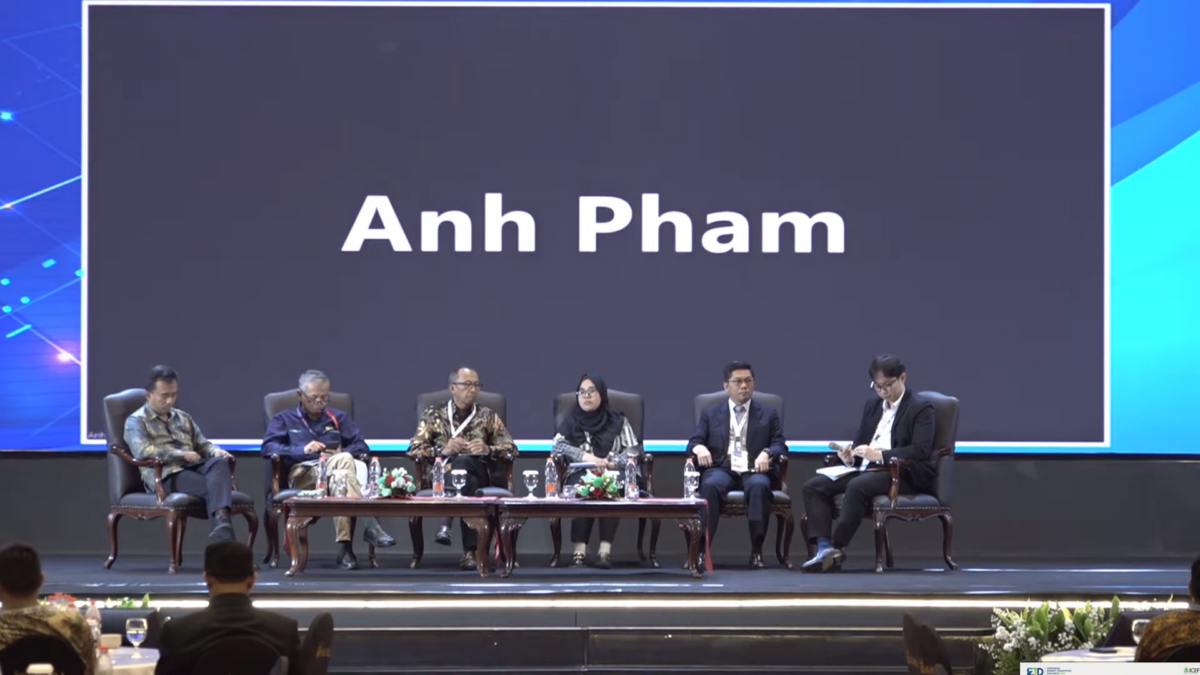Jakarta, 25 July 2023 – Southeast Asia has emerged as a focal point for both economic development, and energy growth. The increasing energy demand within the ASEAN region is to be expected to be met through the expansion of renewable energy. Notably, certain ASEAN countries have achieved noteworthy progress in renewable energy development, exemplified by Vietnam’s exponential growth in solar energy over recent years.
Fabby Tumiwa, the Executive Director of Institute for Essentials Services Reform and the Chairman of The Indonesia Solar Energy Association said that ASEAN must establish strong cooperation in developing solar PV manufacturing capability.
“Southeast Asia countries must ensure affordable access to this technology by establishing a solar PV manufacturing and supply chain that includes silicon ingots, wafers, cells, and other components such as low-tempered iron glass, as well as the balance of system components such as inverters and controllers,” he said.
Fabby added that Southeast Asia has the potential to become a solar PV manufacturing hub, supplying both domestic and global demand. Currently, seven Southeast Asia countries already have manufacturing capacity in various stages, with a total annual capacity of 70 GW of solar module production, with Vietnam supplying half of this capacity.
Monika Merdekawati, research analyst for sustainable renewable energy development, ASEAN Centre for Energy (ACE) during the ASEAN Solar Summit 2023 explained that while solar energy adoption in ASEAN is on the rise, the pace of progress is insufficient to accelerate the energy transition. Vietnam’s remarkable strides in augmenting its solar capacity have been associated by diversification efforts in its renewable energy development plan in its PDP8 (Vietnam’s energy planning).
“It’s similar to Thailand who started to look for biomass development in its priority program plan,” said Monika.
She further highlighted the necessity for Indonesia to devise innovative strategies to attain its goal of achieving a 23% renewable energy mix in 2025.
Within the context of Indonesia, the state-owned utility company PT PLN heavily relies on the 2021-2030 RUPTL (Electricity Supply Business Plan) famously recognized as “green RUPTL” to expedite its renewable energy endeavors. Warsono, the EVP for electricity System Planning, PT PLN on the same occasion said that PLN aims to incorporate5 GW of renewables by 2030.
“The main challenge to deploy renewables, particularly solar, is the fulfillment of local content requirements of the PV component. It means we need to grow the local industry for solar PV components,” he said. Furthermore, PLN is committed to ensuring equilibrium between energy supply and demand of energy.
Mohammad Nazri bin Mizayauddin, Chief Strategy Officer Sustainable Energy Development Authority, Malaysia shared his view on Malaysia strategy to enhance renewable energy penetration.
“People usually look at the large-scale ground mounted solar PV, but now let’s realize the other potential in the solar rooftop. The rooftop itself is an asset,” he said.
According to Nazri, Malaysia has been facing issues related with the energy subsidy therefore the Government must make sure that the market is mature enough to slowly detach the subsidy.
Eka Satria, Director and CEO of Medco Power Indonesia presented the indispensable correlation between growth of the solar PV component industry and expanding market demand. He stressed the importance of compiling and implementing a comprehensive roster of potential projects to instill investor confidence.
“To accelerate solar energy deployment, we need a strong PV industry in Indonesia. To grow the PV industry a long list of committed projects to guarantee the investors that their money wouldn’t be lost,” Eka explained.
Eko Agus Nugroho Director of Machinery and Agricultural Machinery Industry, Ministry of Industry agreed that the solar cell technology is advancing rapidly, urging Indonesia to accelerate its pace in keeping up with the advancement.
“There are 21 local producers making solar modules currently and the total capacity is still below 500 WP. The ministry wants to map the capability of the (solar) industries to fulfill the need from the PLN and other developers,” he said.
Eko also revealed plans for the upcoming announcement of a consortium dedicated to local solar industry manufacture in the ensuing months.

